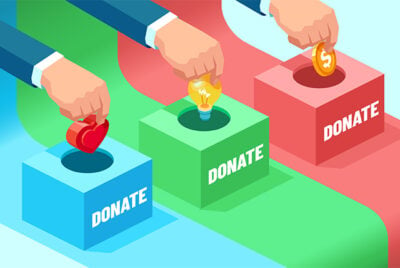December 2nd, 2019
Most non-profit coops post statistics that demonstrate that households contribute to a number of worthy causes—typically six or more each year in addition to faith-based and universities.

Other research has shown that most households have an unwritten, soft amount that they feel comfortable as their charitable giving on an annual basis, based on a percentage of their income (hence, the focus on year-end gifts when most families know their income for the year). Finally, it is the rare donor who focus all their support on a single category—most of them (and us) have a number of causes deemed worthy of support.
If you don’t have a pet, or have a veteran in your family, or were recently treated for a medical condition, you’re less likely to support an animal welfare, veteran or medical organization.
Given those factors, one of the key strategies for any non-profit is to become the preferred charity in its fundraising space, gaining a greater “share of wallet.” It’s extremely unlikely to capture all of a household’s total charitable support, so aiming to be the leader in your category will allow your charity to generate larger and more frequent gifts over time.
What are the key ingredients that can makes your charity preferred over others, especially with 1.5 million non-profits in the United States all aiming at the same donor audiences?
Typically, it comes down to why are you more effective.
This may come from your reach of touching more lives. Or your organization’s unique skill set that helps a broader number of recipients for the same cost. Or the expertise that is not available from any other charitable provider.
For international relief, what may be most important is the ability to quickly react to a disaster or bring a critical skill to bear for an outbreak of disease (UNICEF vs. Doctors Without Borders). For a veteran service organization, it may the hands-on skill across multiple issues that benefit all veterans rather than a narrow skill set for a subgroup of former service members (think VFW vs. Blinded Veterans of America). For museums, it may be its resources versus location (think NY’s Metropolitan Museum of Art versus a local, specialized museum).
… aiming to be the leader in your category will allow your charity to generate larger and more frequent gifts over time.
How do you start? MarkeTeam has found that creating a list of “XX Reasons Why to Support My Cause” is a great first step to think about your capabilities. Once an exhaustive list is developed, interview or email a panel of donors on those reasons to determine which are the most important. Then focus on the attributes that make you different—and better—than your competition.
Once your supporters decide on which attributes are most alluring, focus on communicating those unique capabilities to create differentiation and preference for donors who value those competencies. In some cases, your organization may have multiple unique attributes that can all be promoted (local chapters to have community impact along with a national presence to take on large challenges, or a medical center’s ability to use telemedicine to provide its expertise over longer distances). If so, be sure to tout those skill sets.
Donors want to make sure their gifts are effectively used and have the greatest impact. Make sure they know why your organization meets those criteria!
Blog written by Ron Bell | Managing Partner and Founder
